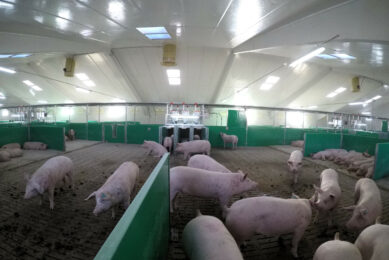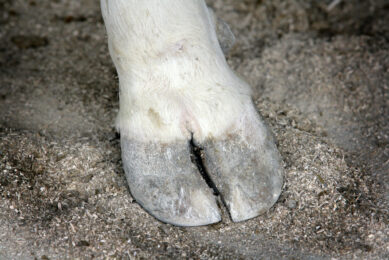Farm visit: Conquering Spain using “bunker farms”
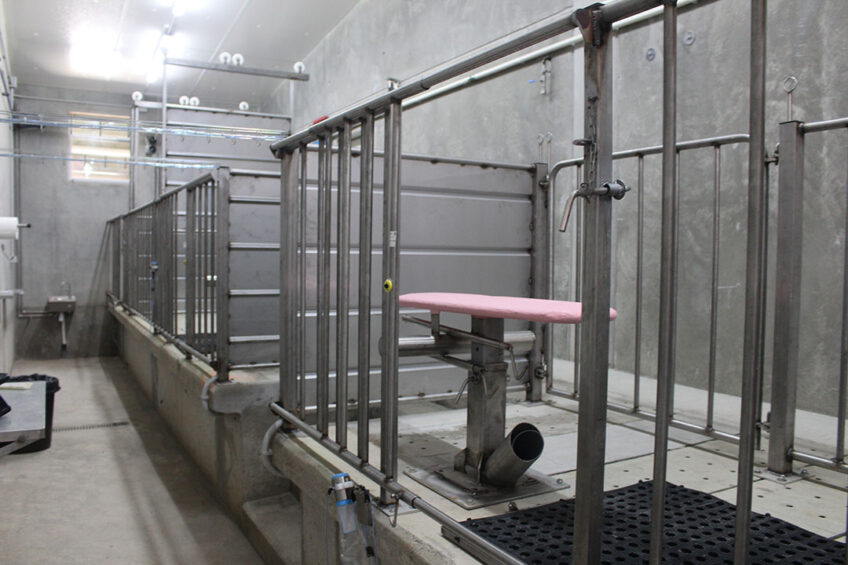
Spain is the number 1 pig country in Europe, so it is no surprise that the major genetics companies are present there, helping to push the industry to new levels. Swine genetics company PIC teamed up with Semen Cardona to open a brand new “gene transfer centre” near the Pyrenees. Just before the first boars arrived, Pig Progress took a look around.
On this day late in April 2023, the sun is out, there is a pleasant murmur, beer is poured, sandwiches are shared and the common opinion is that the gene transfer centre (GTC) Allen is an impressive piece of work. This youngest addition to the GTC family follows the rule that names of GTCs begin with “A”, and it is a place of regulation. The best word to describe the new site is “bunker”: things should only leave; absolutely nothing should enter.
Pig Progress was among the last “non-essential” visitors to ever be allowed to tour this brand new boar facility, just north of Solsona, Catalonia in northern Spain. Late in May 2023 the farm was populated with the most valuable asset that the swine breeding company has to offer: 300 maternal and terminal boars.
The facility is the result of cooperation between genetics company PIC and the Spanish artificial insemination specialist company Semen Cardona. The division between the 2 is pretty clear – PIC owns the genetics, but Semen Cardona owns the building, staff and on-site technology.
The cooperation is an extension of earlier work in 2017 when the 2 companies embarked on constructing the first Spanish GTC. That one was called “GTC Alpha” and was built near Tarazona in Aragón, also in northeastern Spain, and also known for its well-developed pig industry. The plan for that farm was used as a blueprint for the farm in Catalonia.

PIC focusing on Spain
The construction of GTC Allen fits into the strategic focus PIC has on Spain. As the country has taken the lead in Europe in terms of pig production, and as it is populated by large, well-organised pig integrators, PIC could see the country’s vast potential. The swine genetics market there is consolidating, and the genetics company aims to secure its share. In 2014, PIC had a beginning market share in Spain, explains Wilson Pineda, director for southern Europe with PIC, declining to give exact numbers. That share has since grown substantially, he says, and more growth is anticipated in the coming 5 years. Part of that growth is related to growth of the market, and another part is due to PIC increasingly managing to attract the attention of big companies in the market.
Ambitious growth plans on the boar side
That growth is supported by ambitious growth plans on the boar side. Not only did PIC build the GTCs in Tarazona and now near Solsona, the company also acquired several units from the company Sergal, with 700 boars. Expansion plans are also underway as another GTC following the Alpha blueprint for 500 boars is planned in the heart of the country, whereas the Tarazona and Sergal sites can be expanded. In total, PIC aims to have about 2,000 boars in exclusive boar studs in the country in the near future, to be able to have a solid base. An additional number will be kept in customer studs.
The majority of the output will be destined for the Spanish market, but genetics can be sold abroad easily – be it to neighbouring Portugal or even across the ocean to Canada or the USA. GTC Allen is characterised by having maternal boars and terminal boars on-site. The maternal boars will help increase the number and availability of breeding sows for Spanish producers, with Large White and Landrace animals. The terminal boars will eventually determine the type of finisher pig. In Spain, roughly 70% is covered by the Piétrain, followed by Duroc (17%).
Focus on health
PIC hopes to increase its market share by setting new standards in swine production. The aim is to produce semen that answers to the next level of security and safety, and that is reflected in the stringent focus on biosecurity and safety.
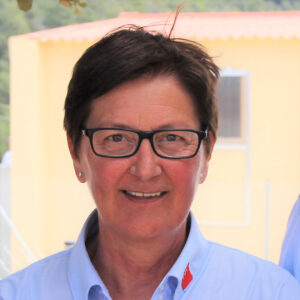
The location
The location north of Solsona was not chosen accidentally. It is close to what is called the “pre-Pyrenees”, a mountain range parallel to the Pyrenees mountains. GTC Allen is approximately 700 m above sea level. Anna Romagosa is responsible for health assurance within PIC. She needs to make sure that all health conditions are optimal for a modern boar facility like this. She explains that PIC works with a 1,000-point scoring plan. Each potential farm location is screened for many criteria, for instance other farms in the vicinity, level of remoteness and accessibility. Of the 1,000 potential points a location can score, a site has to get at least 800 to be eligible to be a GTC.
This Solsona location hit the 800 mark, with no swine farms in the vicinity because of the mountain range being close. The only thing relatively close by is a quarantine facility belonging to GTC Allen, about 700 m away. Other distant neighbours include a few holiday homes, which is why dykes have been created surrounding the GTC, with trees being planted so the farm site will not even be visible from below.
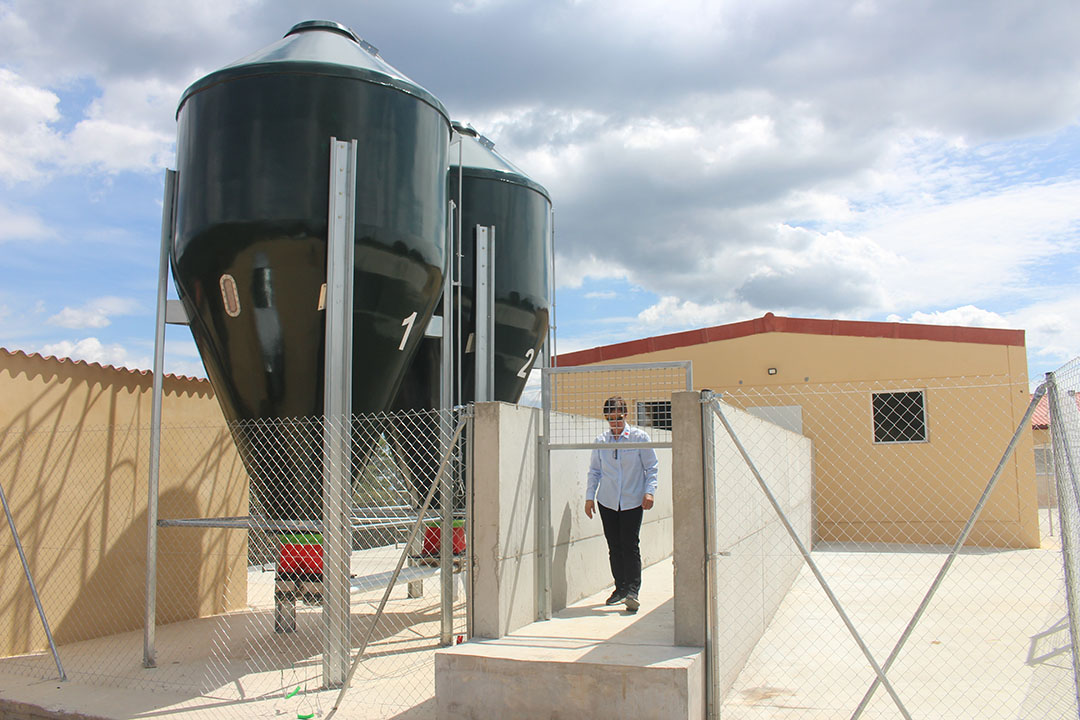
Protection
Intruders – viruses, rodents or humans – will have a hard time getting onto the farm, Romagosa explains. Currently there is a fence around the facility and a second surrounding fence is about to be built a little bit further down the road. Both fences are constructed deeply into the ground so no animal could possibly dig a hole to go underneath them. Every week, the farm manager will check that the fences are intact.
Visitor policy
Outsiders are kept at bay as much as possible. Feed can be delivered to silos that are placed close to the first outside fence, at a strategic location at the far end of the site so a truck never has to get anywhere near the animals.
Similarly, the picking up of sick or old boars happens through the use of a ”lazareto”, a reversed quarantine unit with a place for 12 animals. This is the last place the animals will be before they are picked up.
If a visitor definitely needs to visit the farm, for instance a veterinarian, then a downtime of 3 days is applied, and visits will generally happen on Mondays.

Air inlets
It is striking that each window of the pig farm buildings is flanked by large black units. These contain a fan–filter combination. Air is drawn in through the fans, then is filtered to make sure leaves and even dust particles are taken out. The extra value comes from a Merv 16 filter. This can even pick up particles of Porcine Reproductive and Respiratory Syndrome virus. “If all goes well, fingers crossed, all animals should be getting completely clean air,” Romagosa explains. The units can all step in for one another, so if one inlet breaks down, the others will have to work a bit harder but it doesn’t lead to an immediate emergency.
The entrance
The entrance to the farm is just a small door that can be easily overlooked. That is done on purpose. It should not be too welcoming, PIC felt.
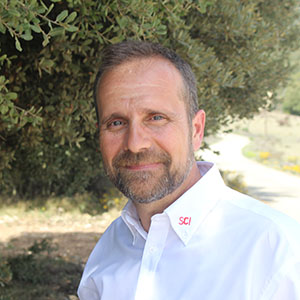
Showering policy
Each of the 11 staff members will have to follow a particular programme to get to their working spots. Upon arrival in vans, they will have to wear overshoes onto the premises, and they can deposit their pre-packed lunch in a disinfection room which can be entered from outside, explains Xavier Novell Goma, area manager with Semen Cardona and responsible for the day-to-day operations at GTC Allen. In the middle of the room, through-passage is blocked by a wall-to-wall open cupboard.
Once all materials are placed in the cupboard and the door is closed, a disinfection spray containing hydrogen peroxide will do its work. In the meantime, staff will enter. Laboratory staff have their own route where they shower and change clothes completely before entering the lab.
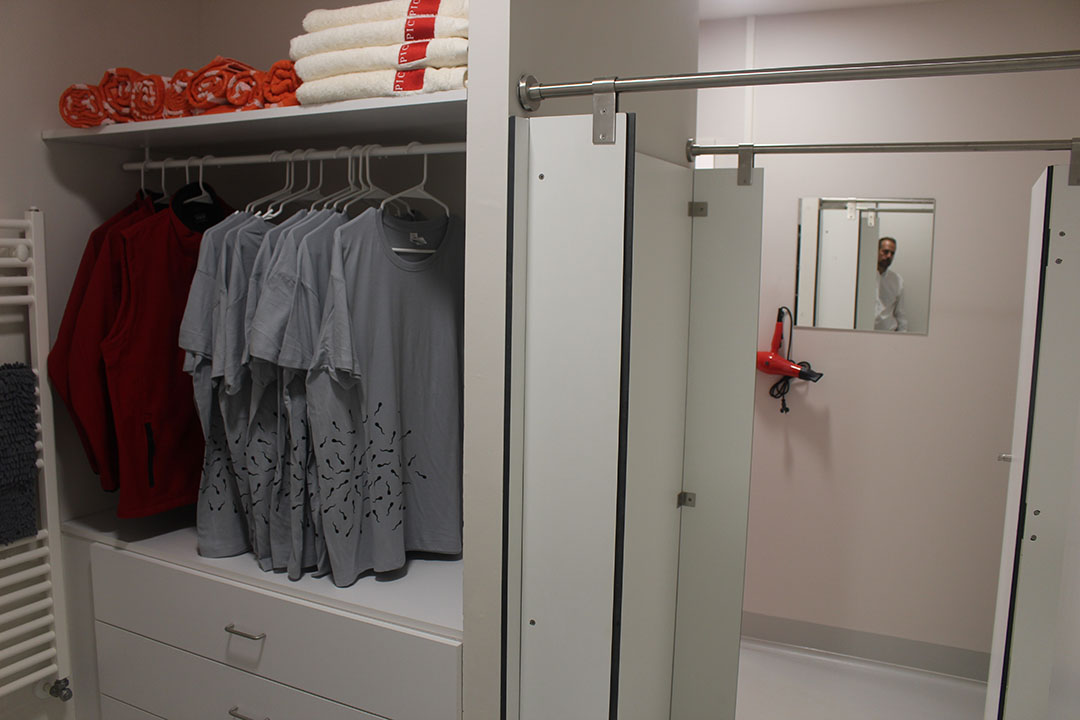
Farm staff will first have to go through a “dry shower”, that is, a sluice for changing of clothes and shoes, before proceeding to the farm buildings. Once the staff members arrive at their respective buildings, a full showering procedure awaits them, with another change of clothes and shoes.
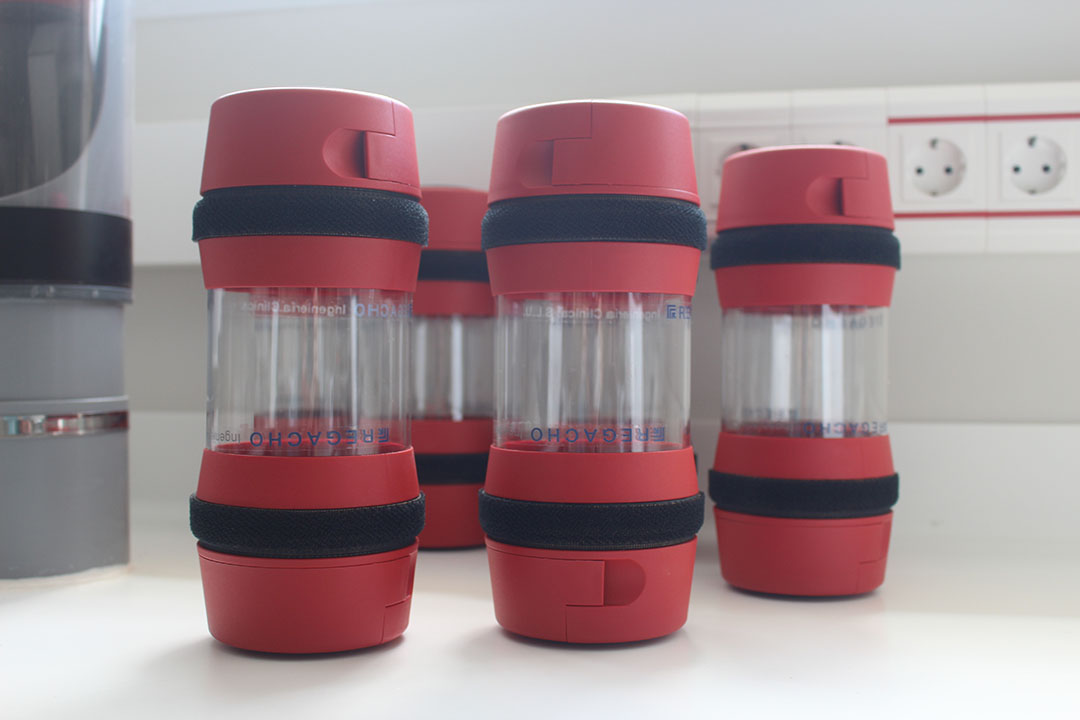
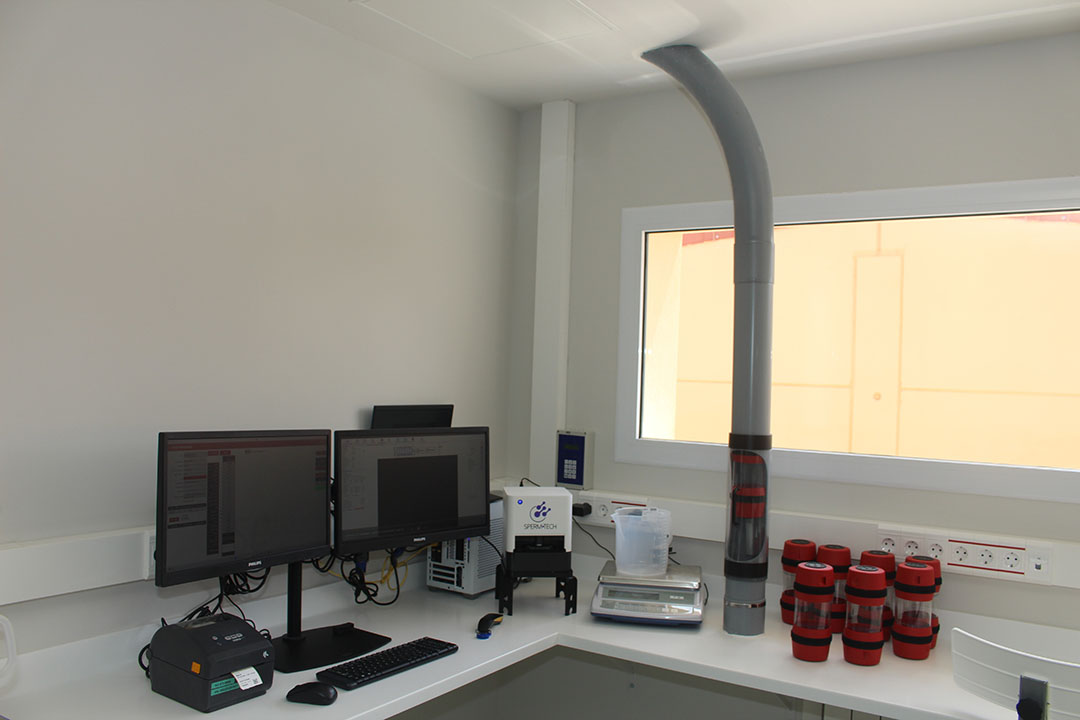
Traceability in the collection room
The semen collection process is one of automated traceable steps, which is also an upgrade from the Tarazona farm. When a boar is ready for collection (every third day), the animal is warmed up in a pre-heating cabin – and he will know he is about to meet the dummy. Ejaculation can take 5 to 10 minutes, and once the boar is done the ear tag is scanned and a barcoded label is printed containing data about day, time, boar and employee. The collection is then placed into a round container which is pneumatically sent via a tube system to the lab.
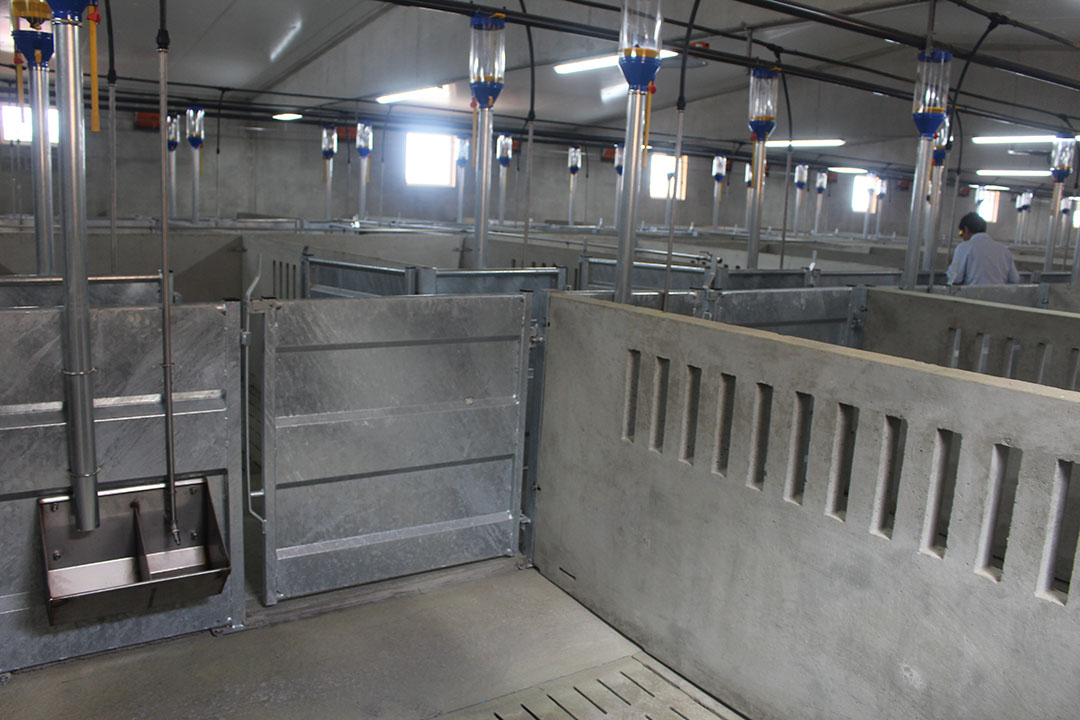
The laboratory
Traceability is at the heart of everything that happens in the lab. Here, the containers are opened and a sample of the ejaculate is taken for scanning purposes, after which it is either considered fit for further processing or discarded. Technologically advanced equipment calculates in a split second how much dilute is needed for each individual ejaculate, after which it is bagged. Technology by Magapor is making this possible.
About 20–30 bags of semen can be obtained from each ejaculate. It is all stored in a large cooling room where gradual cooling down is guaranteed. Too quick a drop in temperature would be detrimental for semen quality. With a label containing all additional information, the bags can be on their way to the distribution centre in Cardona – and be with customers within 24 hours of production.
Climate system
Outside air is actively kept out by use of pressure differences within the farm. In the collection room there is a 12 pascal positive pressure in comparison to outside and, in the animal barns, a 10 pascal positive pressure. That way, air will always have the tendency to flow out whenever a door is opened.
Pride at the opening
This extensive list of top-notch biosecurity measures ensures that only excellent quality semen arrives with customers. So the pride was understandable, that day in late April, at the completion of the project. At the end of the day, the last pictures were taken and the doors locked, now for good.
Only a few very privileged will be allowed – for the rest, GTC Allen will behave like a bunker. Nothing should come in, and only high quality semen should leave.



